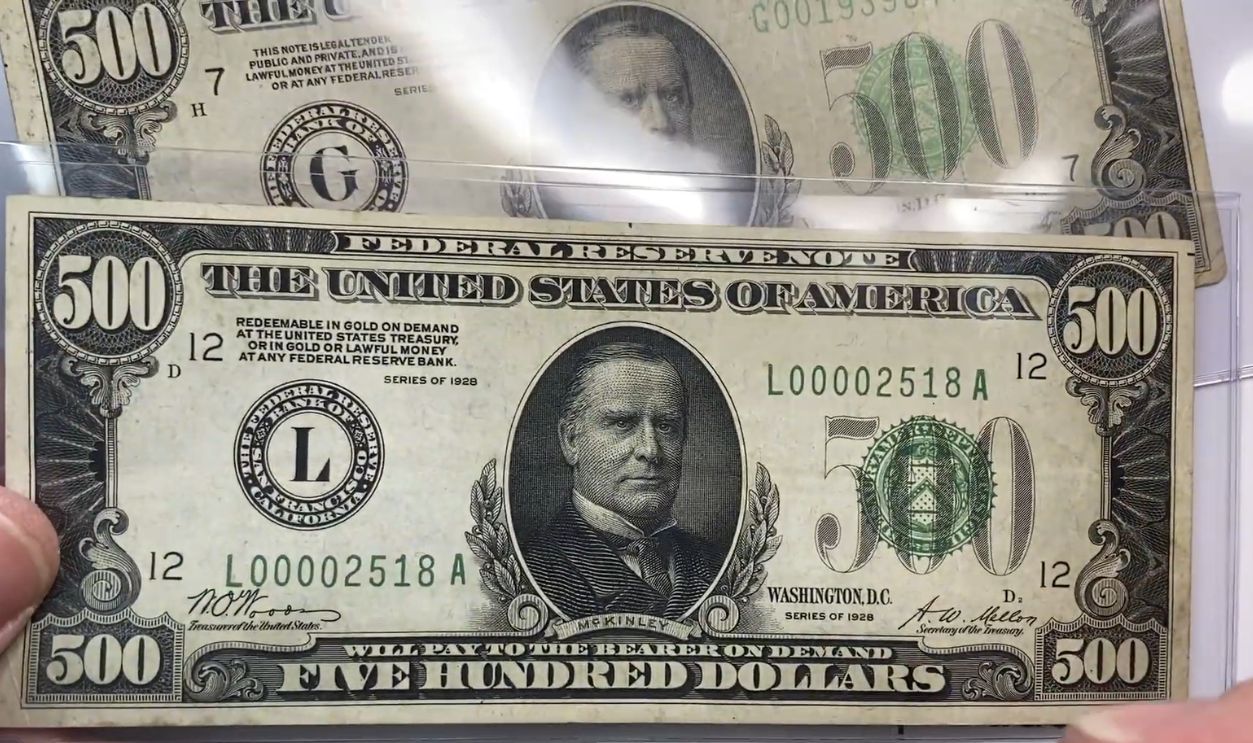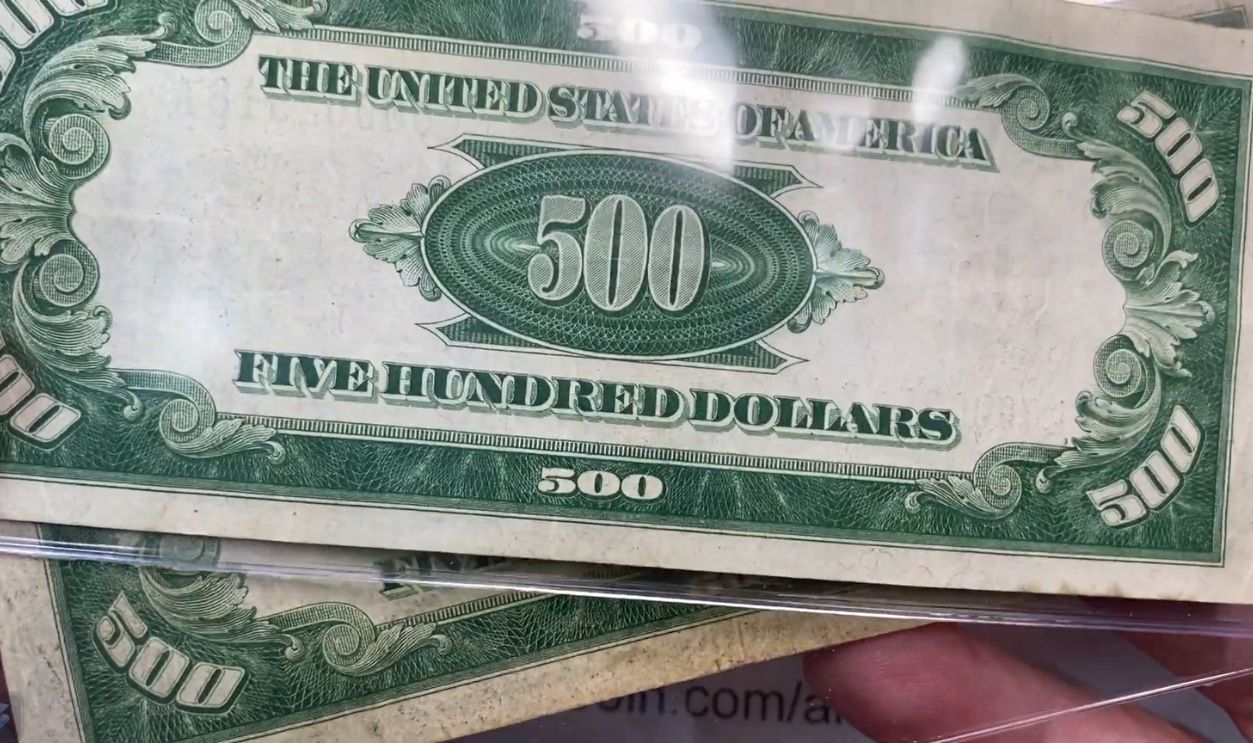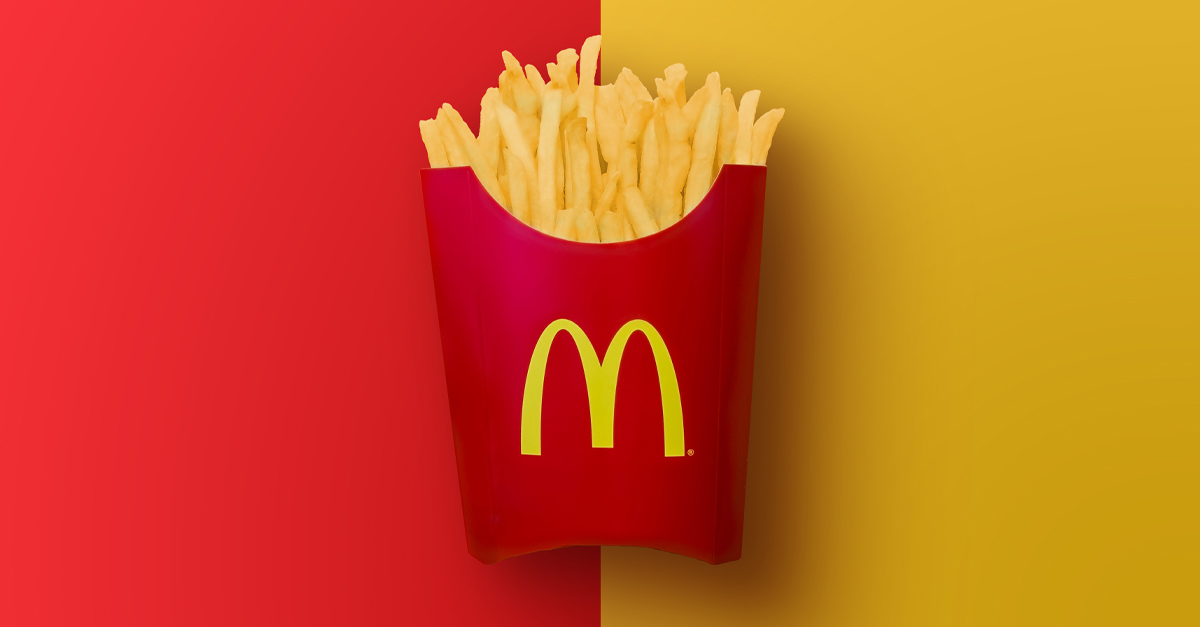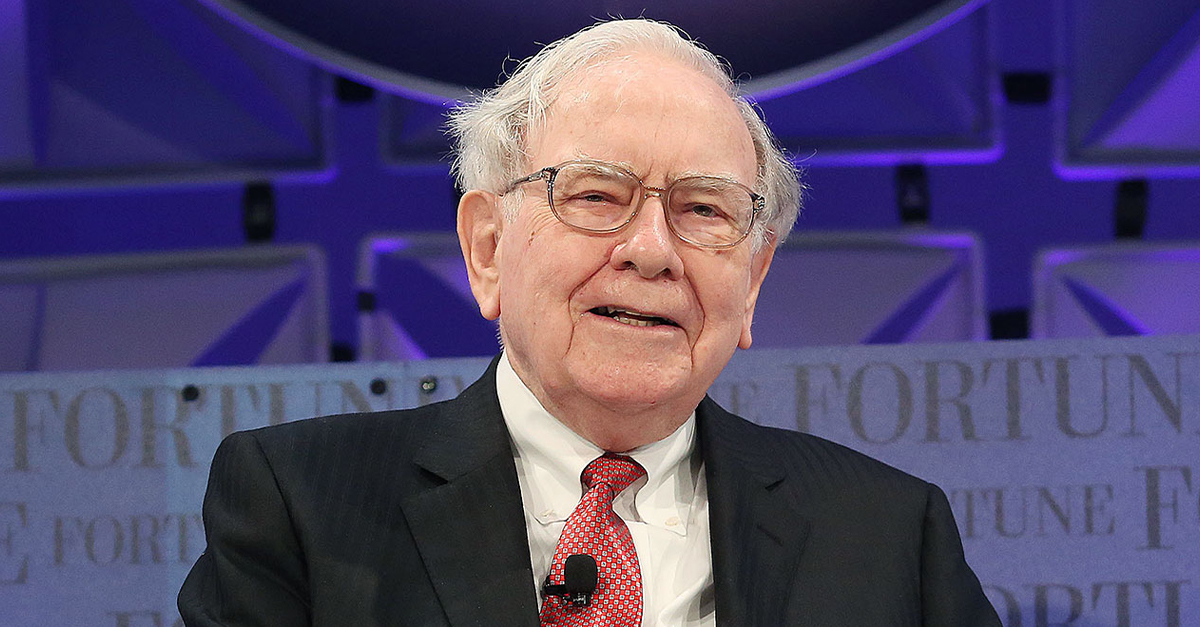Old Money, New Wealth
American history's most coveted paper bills are one of the rarest things. And currency collectors compete fiercely at auctions, driving prices into the millions for those bills.

1890 $1,000 'Grand Watermelon' Treasury Note
Imagine finding this bill in your great-grandparent's attic. The most coveted piece of paper currency among serious collectors sold for a jaw-dropping $2 million at an auction in 2018. Apparently, those distinctive zeroes on the back resembling watermelons gave this rare note its quirky nickname.
 The Bureau of Engraving and Printing, Wikimedia Commons
The Bureau of Engraving and Printing, Wikimedia Commons
1890 $1,000 'Grand Watermelon' Treasury Note (Cont.)
Only seven of these bills are known to exist today, making them the holy grail of currency collecting. General George Gordon Meade, a Civil War hero, graces the face of this scarce note. Its extreme rarity, combined with its unusual design, has cemented its royal status.
 The Bureau of Engraving and Printing, Wikimedia Commons
The Bureau of Engraving and Printing, Wikimedia Commons
1890 $100 'Baby Watermelon' Treasury Note
The smaller sibling to the grand watermelon shows off the same distinctive design feature. Those plump, green zeros on the back that look remarkably like the summer fruit. Reportedly, about 35 known examples are still in existence today.
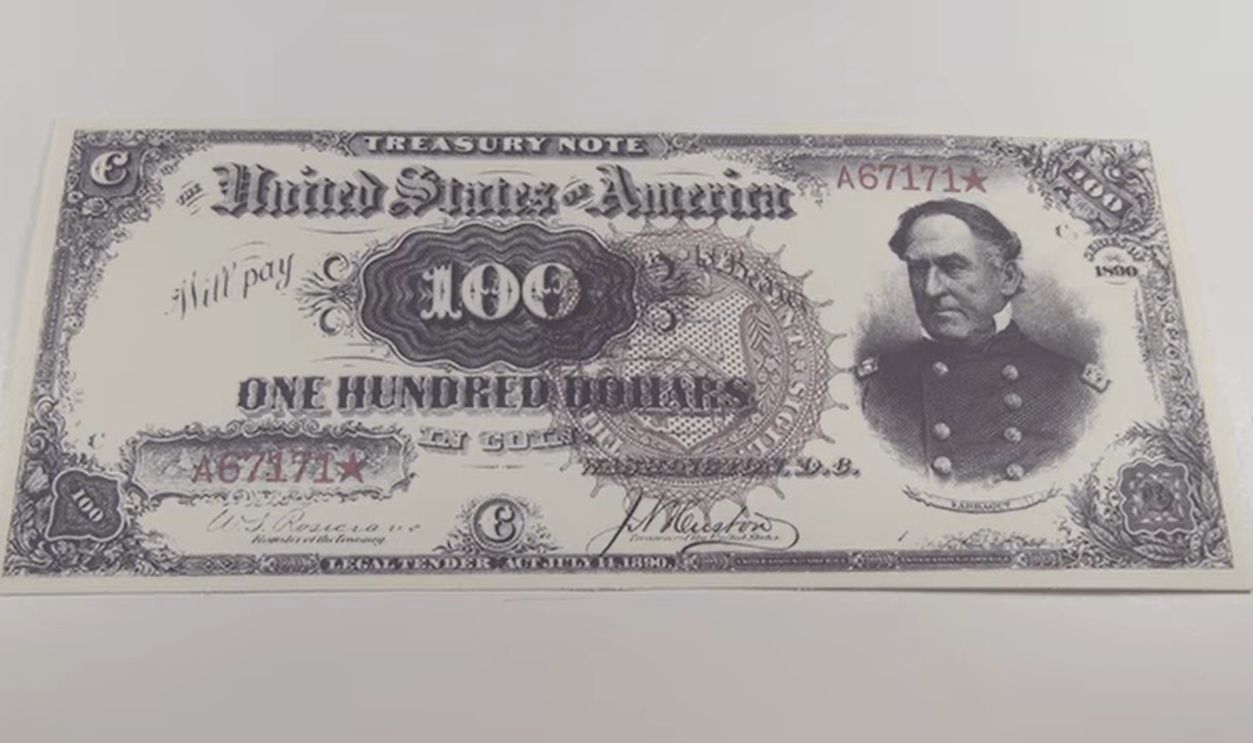 1890 $100 Treasury Note with Admiral David Farragut by TheCurrencyMan
1890 $100 Treasury Note with Admiral David Farragut by TheCurrencyMan
1890 $100 'Baby Watermelon' Treasury Note (Cont.)
Out of these, around 27 are available to collectors. Even common versions of this note can sell for over $10,000 to those truly interested. If you find one in really great condition, it could go for insane amounts, sometimes more than $200,000.
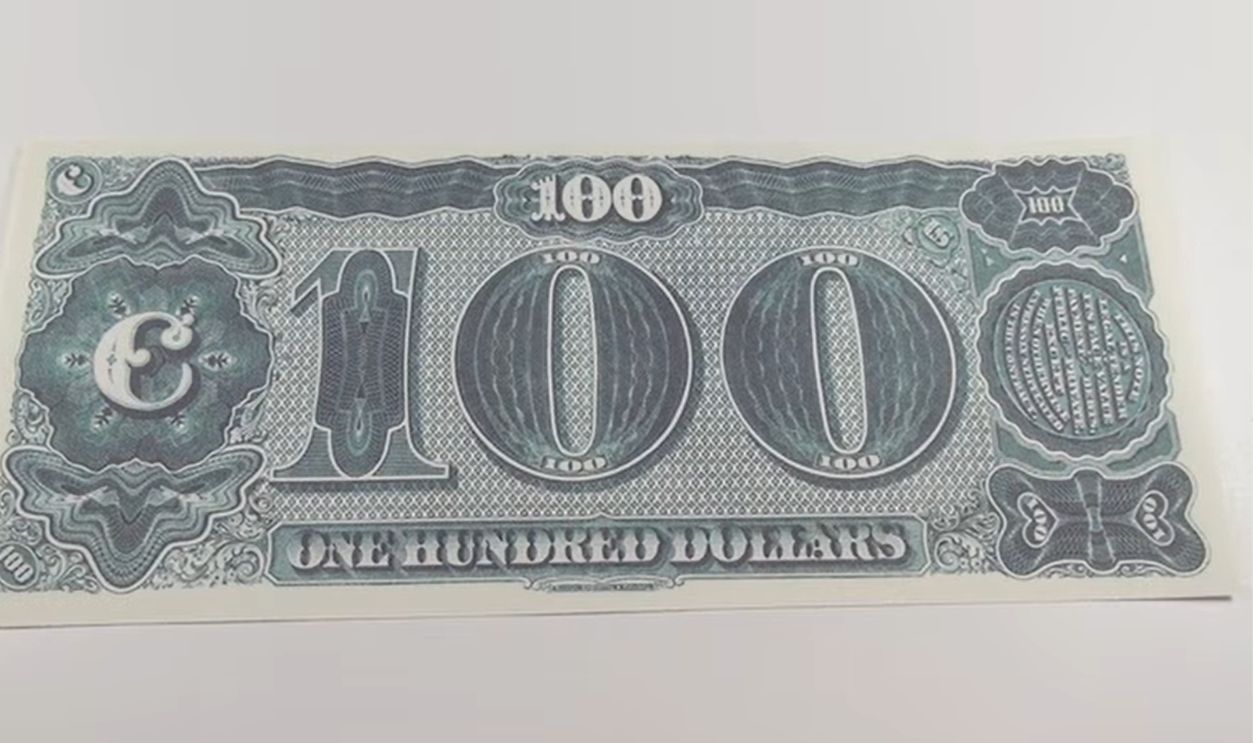 1890 $100 Treasury Note with Admiral David Farragut by TheCurrencyMan
1890 $100 Treasury Note with Admiral David Farragut by TheCurrencyMan
1928 $500 Star Symbol Note
Talking about the real magic of this bill, well, it isn't President McKinley's stoic face staring back at you. It’s that tiny star at the end of the serial number. A regular 1928 $500 bill with an "A" suffix might be worth several thousand dollars.
1928 $500 Star Symbol Note (Cont.)
However, the star symbol version immediately jumps to $10,000 or more. Stars were used as replacement notes when original bills were damaged during production. Few people realize that $500 bills were actually in circulation until 1969 when the Federal Reserve officially discontinued them.
1918 Alexander Hamilton $1,000 Banknote
Hamilton may be a Broadway star now, but back in 1918, he was already commanding impressive real estate on the highest denomination available to collectors. The note displays a portrait of Alexander Hamilton in an oval frame at the center.
 United States Government, Wikimedia Commons
United States Government, Wikimedia Commons
1918 Alexander Hamilton $1,000 Banknote (Cont.)
It has a blue seal at the right and blue serial numbers at the top right and bottom left. Some highly circulated copies of this note go for $8,000 or more. While higher denominations existed ($5,000 and $10,000), these notes are now only found in museums.
 United States Government, Wikimedia Commons
United States Government, Wikimedia Commons
1928 $1,000 Bill
Did you know that until the late 1960s, you could walk into a bank and request one of these notes? Featuring President Grover Cleveland on the face, approximately 68,000 of these bills from the 1928 series are still present. However, finding one in pristine condition is tough.
 United States Government, Wikimedia Commons
United States Government, Wikimedia Commons
1928 $1,000 Bill (Cont.)
The most valuable versions come from the Boston District, identifiable by an "A" inside the Federal Reserve seal to the left of Cleveland's portrait. Serial numbers matter here. Low numbers significantly increase value, while bills having a star next to the serial number can cost around $18,000.
 U.S. Treasury engravers, Wikimedia Commons
U.S. Treasury engravers, Wikimedia Commons
1993 $20 Federal Reserve Note Misprint
Errors fascinate collectors, and when it comes to currency, mistakes can be worth thousands. Take the 1993 $20 bill with an "insufficient ink error" that's valued at nearly $2,600. What makes this error so compelling is the missing patches of the front image.
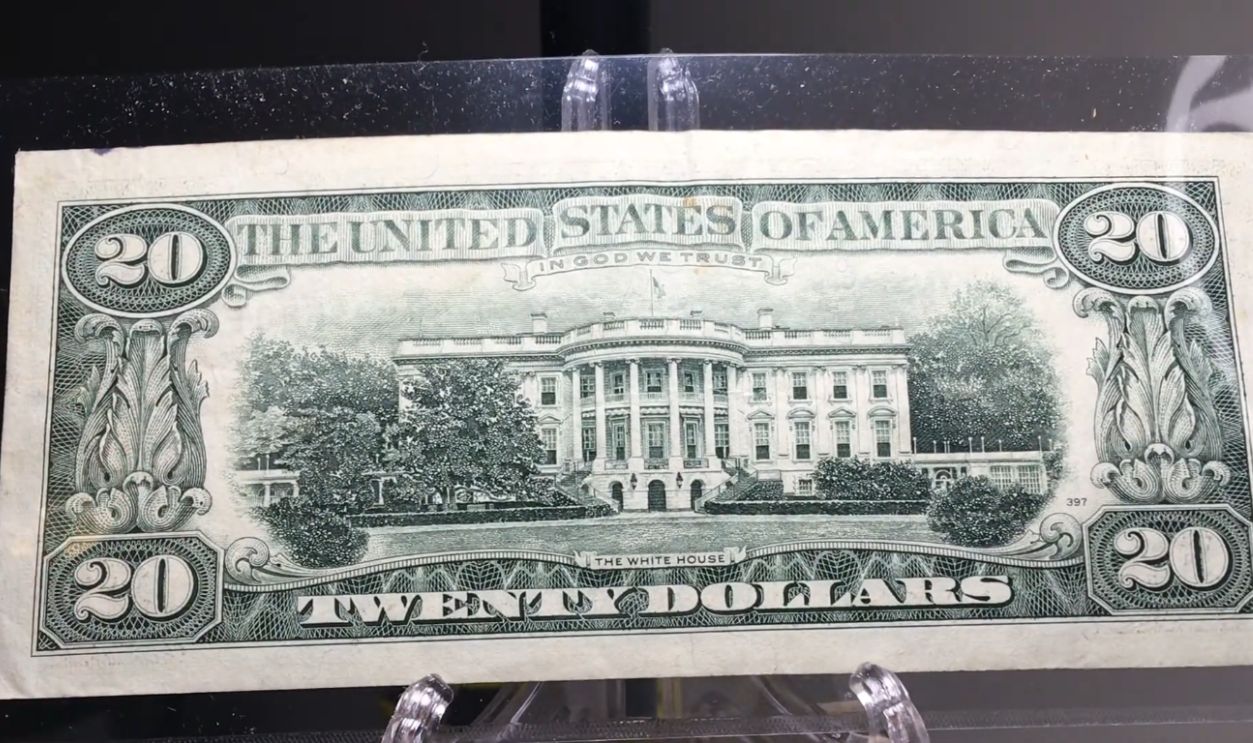 Series 1993 $20 Note - Friends are Priceless by Ontario100
Series 1993 $20 Note - Friends are Priceless by Ontario100
1993 $20 Federal Reserve Note Misprint (Cont.)
It creates an incomplete portrait of Andrew Jackson. When the Bureau of Engraving and Printing discovers these flawed notes, they're typically destroyed before ever reaching circulation. The "double denomination" error is the rarest of all misprints, where the front and back show different values.
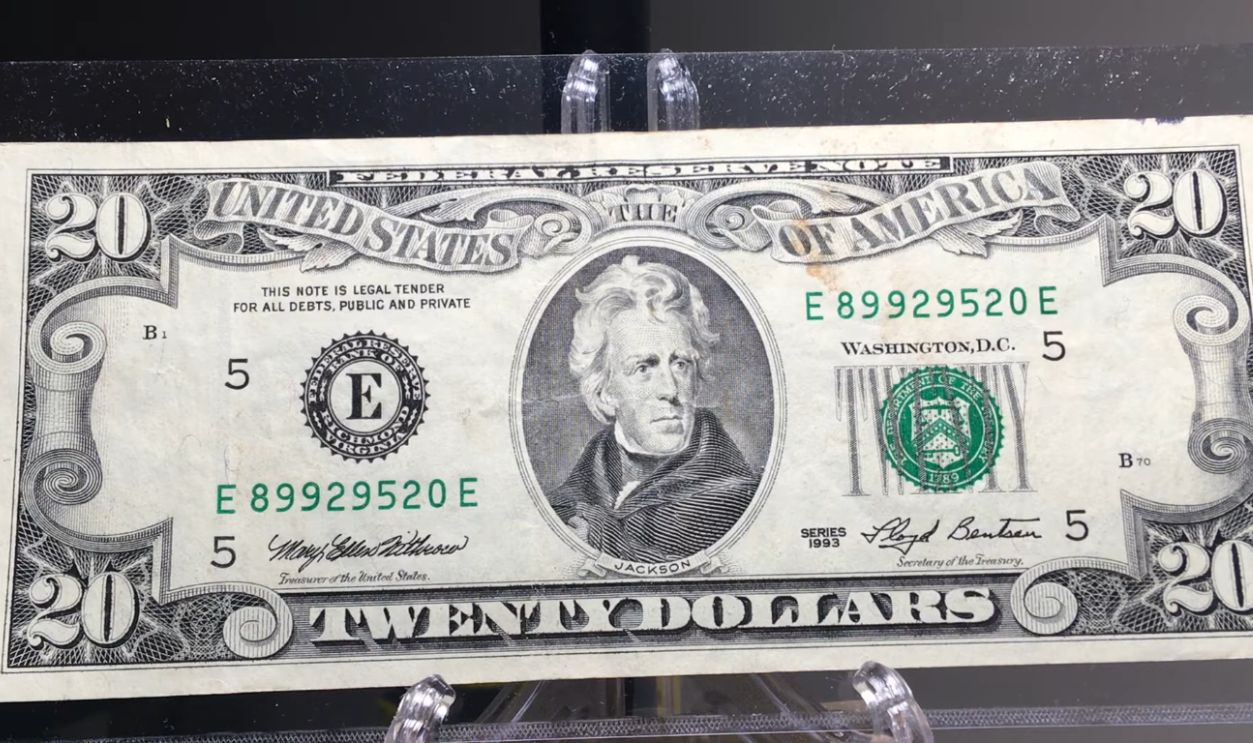 Series 1993 $20 Note - Friends are Priceless by Ontario100
Series 1993 $20 Note - Friends are Priceless by Ontario100
$10 Bison Note
Made to celebrate 100 years since Lewis and Clark’s expedition, this bill breaks the mold by showcasing an American bison alongside portraits of the explorers—all this, instead of the usual Daniel Webster. For years, collectors thought the bison was modeled after the Black Diamond.
 Buffalo by Charles R. Knight, Wikimedia Commons
Buffalo by Charles R. Knight, Wikimedia Commons
$10 Bison Note (Cont.)
Apparently, it was the inspiration for the buffalo nickel. But recent findings show that the image likely came from a stuffed bison on display at the Smithsonian back in the 1800s. The condition of these bills really impacts their value, with top-notch ones costing $1,000.
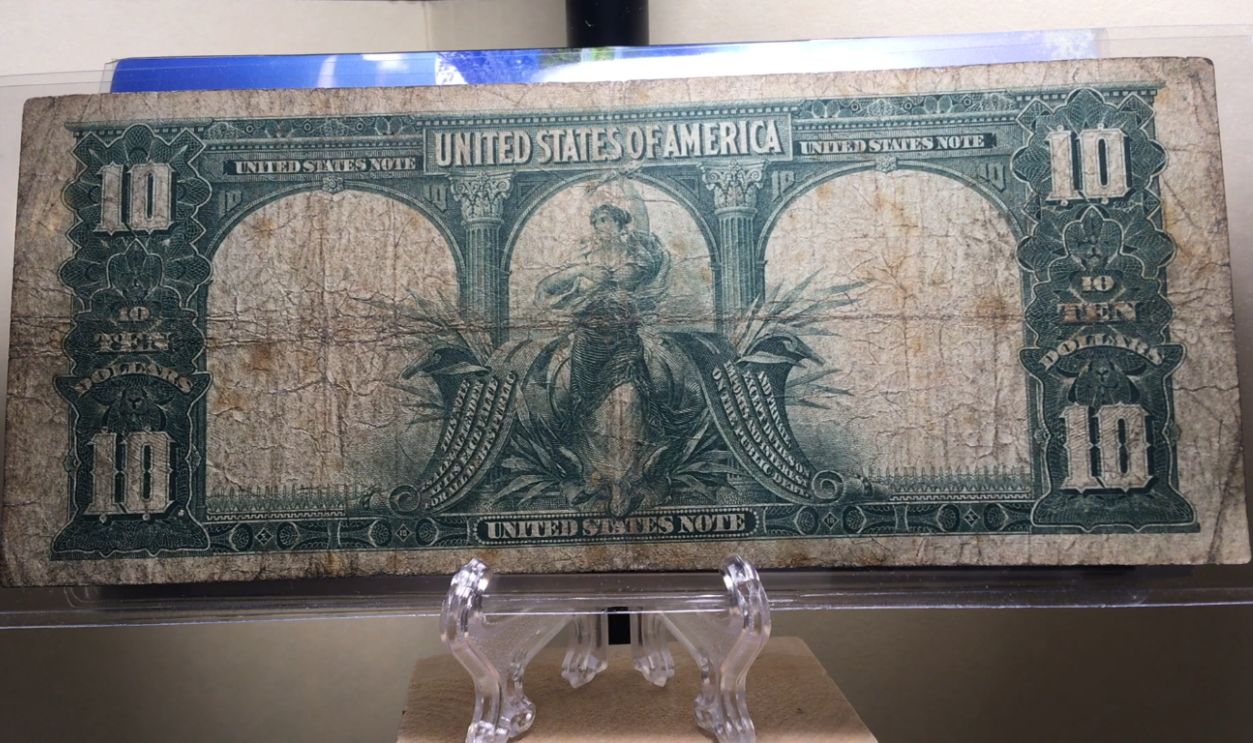 1901 $10 Legal Tender - The Bison Note by Ontario100
1901 $10 Legal Tender - The Bison Note by Ontario100
Low Serial Number 2013 $5 Bill
Would you believe a modern $5 bill could be worth over $1,700? The secret lies in those tiny numbers printed along the edges. Serial numbers under 100 can transform ordinary contemporary notes into collector's treasures.
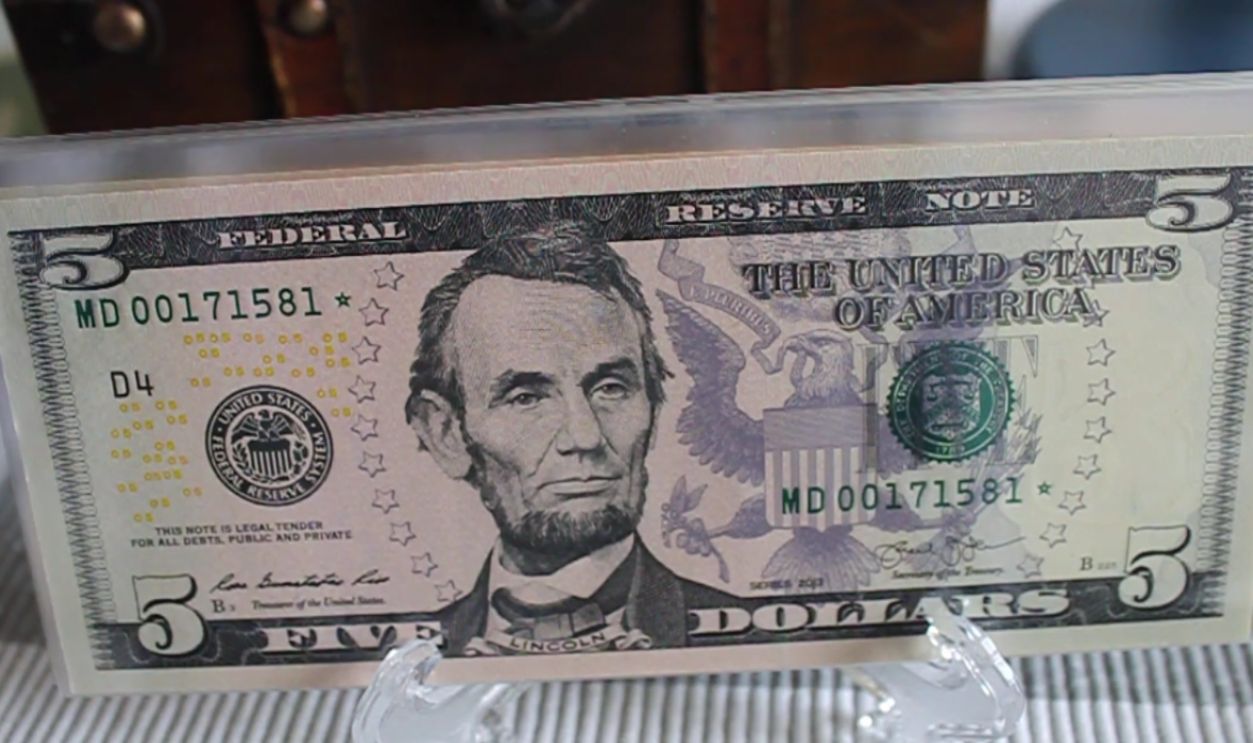 New (2019) 2013 $5 Star Notes. 320,000 printed! Only one run! by Fancy Serial Numbers and coins
New (2019) 2013 $5 Star Notes. 320,000 printed! Only one run! by Fancy Serial Numbers and coins
Low Serial Number 2013 $5 Bill (Cont.)
In May 2019, a 2013 series $5 bill with the coveted serial number "00000001" sold for around $1,776. This price was seemingly chosen to reflect America's founding year. The lower the number, the higher the value, with single-digit serials needing the most excellent premiums.
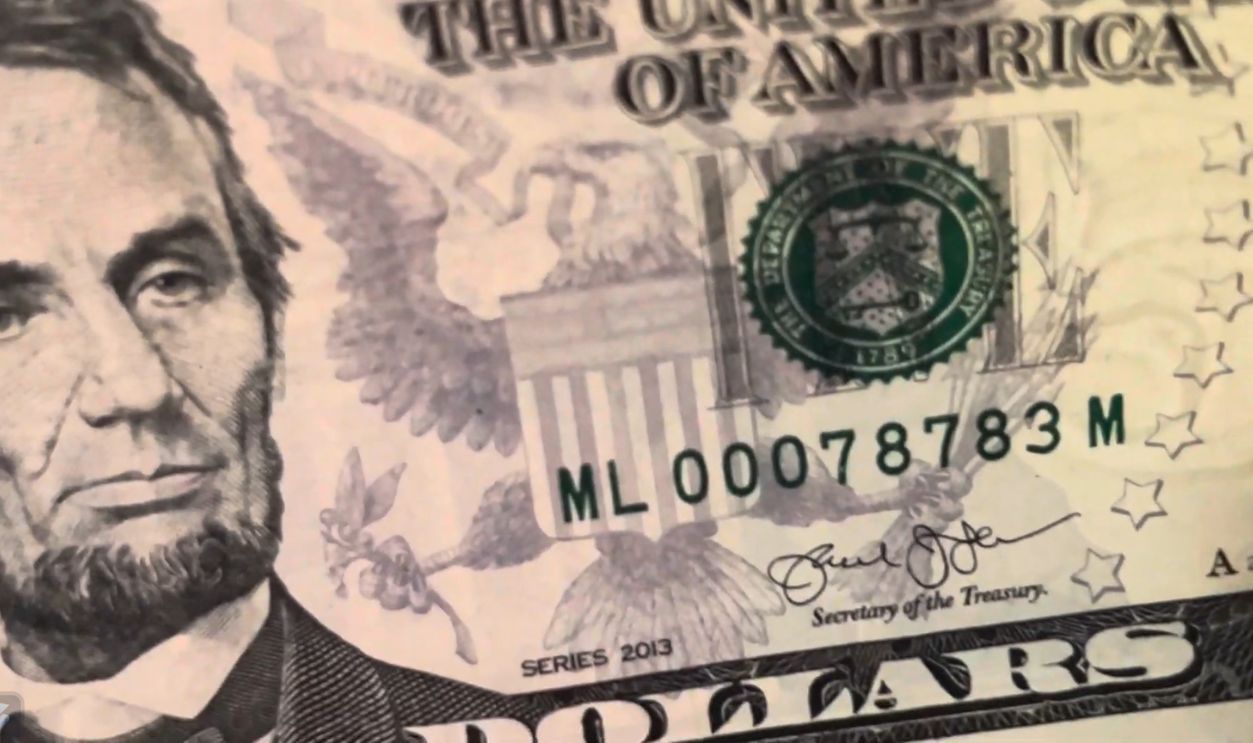 How much is a 2013 five dollar bill worth with a cool serial number  by moneycollecter2022
How much is a 2013 five dollar bill worth with a cool serial number  by moneycollecter2022
1928 $50 Gold Certificate
Before 1933, US paper currency was backed by actual gold, and this $50 bill is a tangible reminder of that economic era. This certificate has President Grant on it, just like the regular $50 bills. The golden seal and the unique serial numbers cannot be skipped.
 National Numismatic Collection,National Museum of American History, Wikimedia Commons
National Numismatic Collection,National Museum of American History, Wikimedia Commons
1899 $5 'Indian Head' Silver Certificate
Known affectionately as "the chief" among currency dealers, this $5 note has the dignified portrait of Running Antelope, a Hunkpapa Lakota chief. The bill was designed to represent the spirit of the American frontier and the nation's complex history with Native peoples.
 National Numismatic Collection,National Museum of American History, Wikimedia Commons
National Numismatic Collection,National Museum of American History, Wikimedia Commons
1899 $5 'Indian Head' Silver Certificate (Cont.)
While not very rare in quantity available, its imagery has made it increasingly sought-after over recent decades. Some values start around $300 for circulated pieces. There's historical evidence that Running Antelope was depicted wearing a Pawnee headdress rather than one from his own Lakota tradition.
 Episode 182: Chief Note $5 Silver Certificate 1899 by 4 Kollector
Episode 182: Chief Note $5 Silver Certificate 1899 by 4 Kollector
1923 $1 Legal Tender Note
Before America switched to the smaller bills we use today, this unique banknote marked the end of an era and the last chapter of the "large size" money. Eager collectors may purchase these notes for $400, $600, or more, depending on their condition.
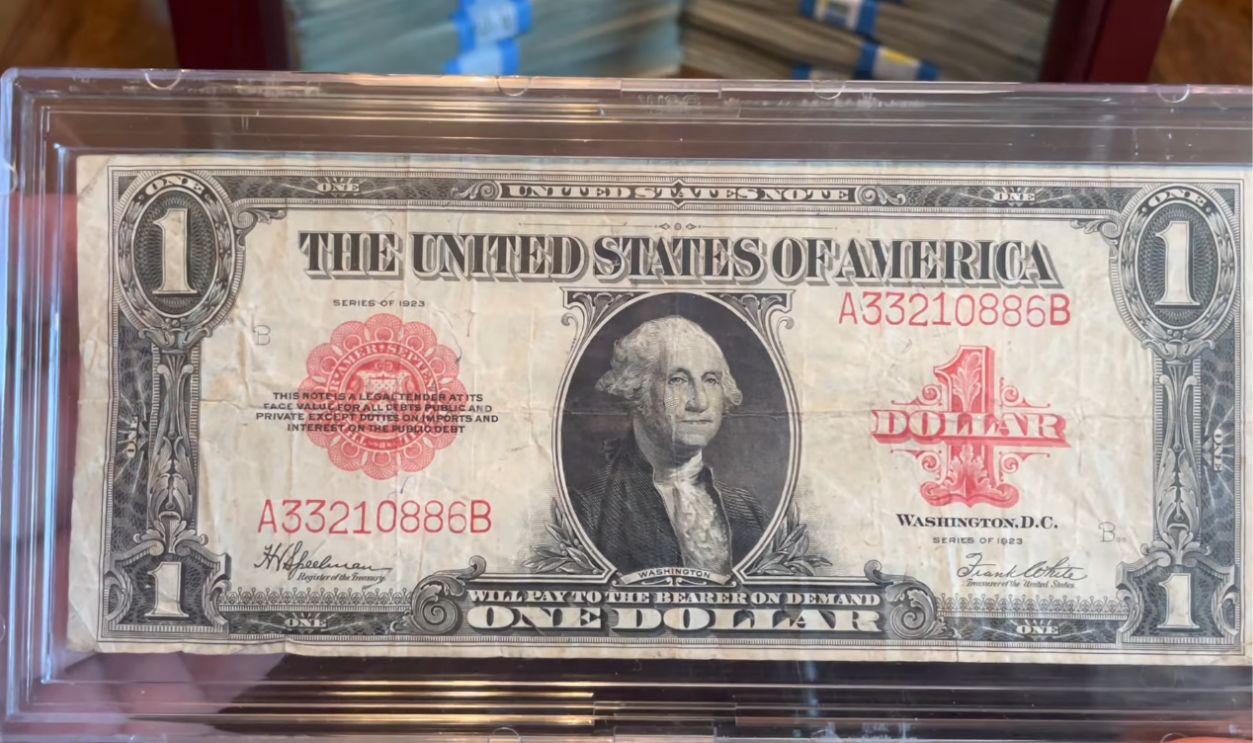 1923 $1 LT oops from eBay huge mistake! by Stuplubak Currency
1923 $1 LT oops from eBay huge mistake! by Stuplubak Currency
1923 $1 Legal Tender Note (Cont.)
It’s recognizable through that "cogwheel" design on the reverse side, complemented by a bold red scalloped seal and denomination number on the front. Like other large-size notes of the era, it measures around 7.4 inches by 3.1 inches, making it larger than modern currency.
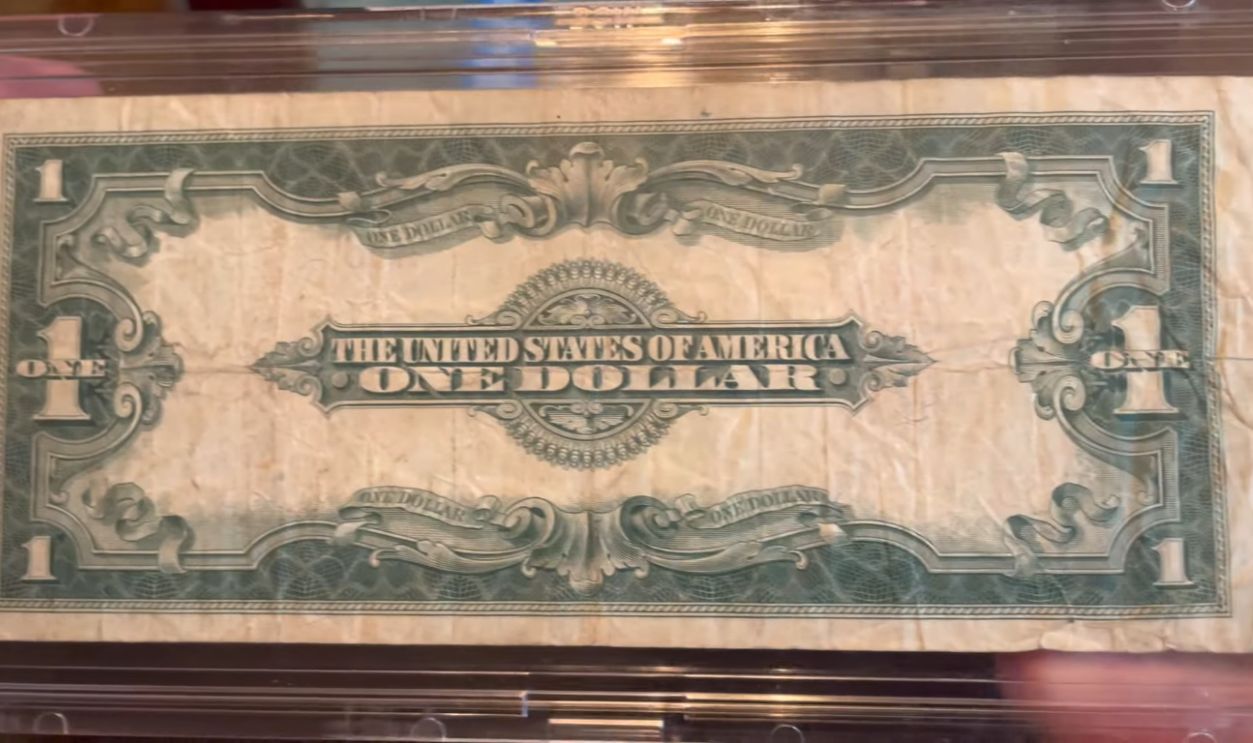 1923 $1 LT oops from eBay huge mistake! by Stuplubak Currency
1923 $1 LT oops from eBay huge mistake! by Stuplubak Currency
1928 $20 Gold Certificate
The golden-yellow seal and serial numbers immediately distinguish this from ordinary $20 bills of the era. Once again, we have President Jackson. Just like standard notes, uncirculated pieces cost you nearly $2,800 in today's collector market. The history behind gold certificates makes these intriguing.
 US Bureau of Engraving and Printing, Wikimedia Commons
US Bureau of Engraving and Printing, Wikimedia Commons
1928 $20 Gold Certificate (Cont.)
President Roosevelt's Executive Order 6102 in 1933 dramatically changed this relationship. He made private gold ownership illegal and required Americans to exchange their gold and gold certificates for standard currency. The 1928 series was the first to introduce the modern small-sized format for Gold Certificates.
 US Bureau of Engraving and Printing, Wikimedia Commons
US Bureau of Engraving and Printing, Wikimedia Commons
1899 $2 Large-Size Silver Certificate
In American currency, the $2 denomination has always been a little out of the ordinary; it is neither as common as $1 notes nor as useful as $5 notes. Uncirculated 1899 $2 Silver Certificates are worth about $3,825. Individuals refer to this note as the “Mini-Porthole”.
 Godot13 / Smithsonian Institute, Wikimedia Commons
Godot13 / Smithsonian Institute, Wikimedia Commons
1922 $20 Gold Certificate Large Size Note
Here, the number "TWENTY" is bolded on the obverse, which also depicts the allegorical figure of Liberty encircled by scrollwork. Serious collectors are willing to pay over $5,495 for beautiful, uncirculated copies. For instance, a PMG Superb Gem Unc 67 EPQ graded note is highly valuable.
 National Numismatic Collection,National Museum of American History,Wikimedia Commons
National Numismatic Collection,National Museum of American History,Wikimedia Commons


